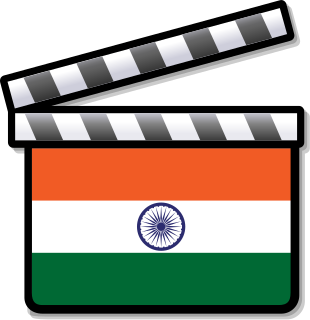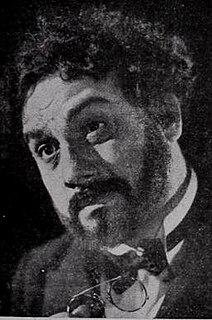Related Research Articles

Shantaram Rajaram Vankudre, referred to as V. Shantaram or Shantaram Bapu, was an Indian filmmaker, film producer, and actor known for his work in Hindi and Marathi films. He is most known for films such as Dr. Kotnis Ki Amar Kahani (1946), Amar Bhoopali (1951), Jhanak Jhanak Payal Baaje (1955), Do Aankhen Barah Haath (1957), Navrang (1959), Duniya Na Mane (1937), Pinjara (1972), Chani, Iye Marathiche Nagari and Zunj.

Ramchandra Gopal Torne, also known as Dadasaheb Torne was an Indian director and producer, best known for making the first feature film in India, Shree Pundalik. This historic record is well established by an advertisement in The Times of India published on 25 May 1912. Several leading reference books on cinema including The Guinness Book of Movie Facts & Feats, A Pictorial History of Indian Cinema and Marathi Cinema : In Restrospect amply substantiate this milestone achievement of the pioneer Indian feature-filmmaker.

Marathi cinema, also known as Mollywood, refers to Indian films produced in Marathi, the language of the state of Maharashtra, India. Based in old Mumbai, it is the oldest and pioneer film industry of Indian cinema. The first Marathi film to be released in India was Shree Pundalik by Dadasaheb Torne on 18 May 1912 at Coronation Cinematograph, Mumbai. and a Marathi crew who were performing Marathi and Sanskrit Sangeet natikas (musicals) and plays in Marathi at that period.

Prabhat Film Company was an Indian film production company and film studios founded in 1929 by the noted film director V.Shantaram and his friends.

Baburao Painter (1890–1954) was an Indian film director.
Vishnupant Govind Damle was an Indian production designer, cinematographer, film director and sound engineer for Marathi films. His 1937 film Sant Tukaram was the first Indian film to be screened at an international film festival. It won a "Special Recommendation" at the 5th Venice International Film Festival.

Das Baje, also called 10 O'Clock, is a Bollywood film. It was released in 1942. This was a debut direction for Raja Nene, a protege of V. Shantaram, and produced under Shantaram's Prabhat Film Company banner. The film was a bilingual, made in Hindi, and in the Marathi language as Daha Wajta. The music direction was by Keshavrao Bhole. The story was written by Kashyap and Pawar, with dialogues in Hindi by Ashant. The photography was by E. Mohammed. It starred Paresh Bannerji, Urmila and Vasant Thengdi in the lead roles, with Baby Shakuntala and Manajirao forming the supporting cast.
Vishnupant Damle : The Unsung Hero Of Talkies Is a national award-winning docudrama about life of Shri Vishnupant Damle – one of the founder members of the legendary Prabhat Film Company. V G Damle started his journey as a poor village boy and became a remarkable personality in the film history of India. In the early 19th century, he has worked as an art director, cameraman, sound recordist, producer and director, for many acclaimed films.
Gopal Krishna is an Indian religious silent film made in 1929. It was directed by V. Shantaram for his newly formed Prabhat Film Company. The film was a "solo debut" for Shantaram, after co-directing Netaji Palkar (1927) with K. Dhaiber for the Maharashtra Film Company. The story was written by Shivram Vashikar and the cast composed of Suresh, Kamaladevi, Anant Apte, Sakribai and G.R. Mane.

Udaykal is a 1930 historical silent film co-directed by V. Shantaram and Keshavrao Dhaiber. It was produced by Prabhat Film Company. The story was written by Baburao Pendharkar. The cinematographers were S. Fattelal and V. G. Damle. The film starred V. Shantaram, Baburao Pendharkar, Kamla Devi, G. R. Mane, Ibrahim and Dhaiber.
Rani Saheba also called Bazarbattu is a 1930 Indian silent film. It is cited as the first children's film made in India. The film was co-directed by V. Shantaram and Keshavrao Dhaiber. The cinematographers were S. Fattelal and Vishnupant Govind Damle and the cast included Keshavrao Dhaiber, Baburao Pendharkar, V. Shantaram and Anant Apte.
Khooni Khanjar is a 1930 Indian silent film directed by V. Shantaram. The film was a costume action drama film co-directed by Keshavrao Dhaiber. It was produced by Prabhat Film Company. The cinematography was by Sheikh Fattelal and Vishnupant Govind Damle. The cast included Mane Pahelwan, Ganpat G. Shinde, P. Jairaj, Sakribai and Shankarrao Bhosle.

Manoos, also called Life's for Living, is a 1939 Indian Marathi social melodrama film directed by V. Shantaram. The movie was simultaneously made in Hindi as Aadmi. The film was based on a short story called "The Police Constable". The story was by A. Bhaskarrao, with screenplay and dialogue by Anant Kanekar. The cinematographer was V. Avadhoot and the music was composed by Master Krishna Rao, with lyrics by Kanekar. The cast included Shahu Modak, Shanta Hublikar, Sundara Bai, Ram Marathe, Narmada, Ganpatrao and Raja Paranjpe.
Draupadi is a 1931 sound film from Indian cinema. The film was a big-budget mythological production from Ardeshir Irani's Imperial Film Company following their release of the first talkie in India, Alam Ara (1931). It was directed by Bhagwati Prasad Mishra, who had made a name for himself as a photographer and painter and had worked with Irani in his Star, Majestic, Royal and Imperial Studios. The story adaptation from Vyasa's Mahabharata and the screenplay, were by Mishra. The star cast included Prithviraj Kapoor who played the role of Arjuna, with Ermeline as Draupadi, and Khalil as Krishna. The rest of cast included Hadi, Elizer, Rustom Irani and Jilloobai. The cinematographer was Adi Irani.

Sairandhari is a 1933 Indian film based on an episode from the Mahabharata and directed by V. Shantaram. The film was a bilingual made as Sairandhari in both Marathi and Hindi. Produced by Prabhat Film Company, it has been cited as one of the 21 "most wanted missing Indian treasures" by P K. Nair, the National Film Archive of India founder. The music composer was Govindrao Tembe. The cast included Master Vinayak, Leela, Prabhavati, Shakuntala, G.R. Mane, Nimbalkar and Shankarrao Bhosle.

Hansa Wadkar (1923–1971) was a Marathi and Hindi film and stage actress of Indian cinema. She started her acting career at the age of thirteen years, as a heroine in the bilingual film Vijaychi Lagne (1936). Wadkar went on to make a name for herself working in the reputable film companies like Bombay Talkies, Prabhat Film Company and National Studios. Her career defining role was in Vishnupant Damle's Sant Sakhu (1941) where she enacted the role of the female saint Sakhu. Her other memorable roles were in the Tamasha genre films like Lokshahir Ram Joshi (1947), termed as the "Classic Marathi Tamasha musical". Sangtye Aika (1959) was another of Marathi cinema's "best known Tamasha film" along with Ram Joshi. She thus acted in two of Marathi cinema's biggest hits Lokshahir Ramjoshi and Sangtye Aika. The title "Sangtye Aika" was used by Wadkar for her autobiography compiled in 1971. The autobiography was initially serialised in the Marathi magazine Manoos helped by journalist Arun Sadhu.

Mazhar Khan (1905–1950) was an actor-producer-director in Indian Cinema. He was acknowledged for his strong yet natural performances, best exemplified by his role in V. Shantaram's classic Padosi (1941), wherein Mazhar, a Muslim, enacted the role of an upper-caste Hindu. He started his career as a police officer, which he left to study law for a short period. Abandoning his studies he came to Bombay and started his career in cinema with the silent film Fatal Garland opposite the top actress of the time, Ermeline. He became a popular actor, gaining success in several silent films. During his stint in silent films he worked with well-established directors like Bhagwati Mishra, Ezra Mir, Moti P. Bhagnani, R. S. Chowdhary, and M. D. Bhavnani. The magazines of those days, circa 1940s, compared Mazhar to Hollywood actors like Paul Muni, Bela Lugosi and Boris Karloff.
Sairandhari is a 1920 Indian film based on an episode from the Mahabharata and directed by Baburao Painter and Produced by Maharashtra Film Company. V. Shantaram remade it as Sairandhri in 1933
References
- 1 2 3 4 Richard Abel (2005). Encyclopedia of early cinema. Taylor & Francis. p. 589. ISBN 0-415-23440-9.
- ↑ Geoffrey Nowell-Smith (1996). The Oxford history of world cinema . Oxford University Press. p. 399. ISBN 0-19-811257-2.
Maharashtra Film Company.
- 1 2 Backing Prabhat Films Indian Express , Thursday, 22 July 1999.
- ↑ "Baburao Painter". Upperstall.
